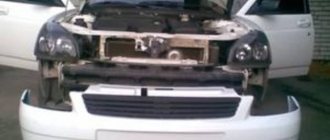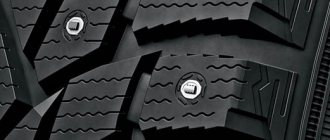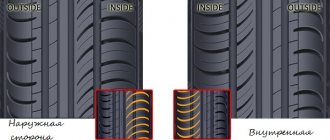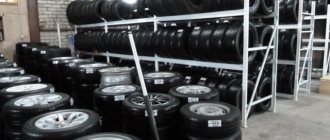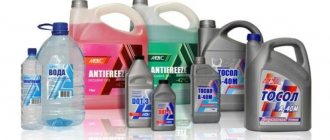Many car owners have heard about the fact that if the car has been idle for a long time, then it is necessary to change the rubber products on it, including tires. The fact is that tires have a limited shelf life. Over the years, rubber dries out and becomes unsuitable for performance. But this circumstance also applies to rubber that is used regularly. To make it easier for car owners to calculate the service life, manufacturers set the production date on their products. Thanks to this, the driver can determine the expiration date and decide on installation.
Tires that are unclaimed by customers and have been in the store's warehouse for 5 years are sent back to the factory for recycling.
Tire shelf life
The Ministry of Transport of the Russian Federation clearly regulates the shelf life of car tires without use - 5 years in the warehouse of the manufacturer or supplier. In this case, the full shelf life of a car tire is 10 years.
The technical condition of rubber is influenced by many factors, ranging from storage conditions, compliance with the manufacturer’s recommendations, and ending with the brand and type of product. For example, the service life of a summer tire is longer than that of a winter tire, while that of a studded tire is shorter than that of a similar product without studding from the same manufacturer.
How many years can it be used?
Tire cracks
If tires are used correctly, their service life can reach 100,000 km - a car mileage that, according to statistics, will take the driver approximately 4 years to cover. Experts advise assessing the condition of the tires with studs at the end of the winter season. If more than 50% of the elements are in place, this means that the tires will last another season, but if they are not enough, you can move on wheels throughout the summer until they are completely worn out, after which you should purchase new wheels.
Shelf life of tires according to GOST
According to Russian legislation, the shelf life of a car tire according to GOST 5513-97 and GOST 4754-97 and 52900-2007 is 5 years.
The service life begins from the date of manufacture.
You can find out when a tire was produced by its marking (DOT code). On tires produced after 2000, the date of manufacture is indicated using 4 digits - the first 2 are the week number, and the second are the year of manufacture. For example, DOT code 1710 means that the tire was produced in May 2010. On car tires from earlier years of production, the marking contained 3 digits - 2nd is the week number, and the 3rd is the year.
The shelf life of a car tire is influenced by the following factors:
- mileage;
- terms of Use;
- pressure;
- constant overloads;
- getting into an accident;
- mechanical damage;
- improper storage;
- the disc does not match the car tires;
- At what speeds are the tires used?
It is important to consider that fast driving (over 120 km/h) can reduce the shelf life of new car tires by 50%. Therefore, when choosing tires, you need to pay attention to one more marking element indicating the maximum speed:
| Designation | Maximum speed (km/h) | Expiration date (year) |
| ZR | 240 | 6 |
| H | 210 | 5 |
| S | 180 | 4-5 |
You should also definitely take into account the type of car tires, since the service life of summer, winter, all-season, truck and unused tires can vary significantly.
Summer
Summer tires differ from winter tires in their composition and performance properties, and often their markings contain the symbols ZR or H, allowing their use at high speeds. And this reduces the service life of such tires. Therefore, it is not recommended to use it for more than 6 years.
The same applies to tires installed on car trailers and trucks. Most well-known manufacturers indicate the shelf life of summer car tires within 5-10 years.
Winter
This type of rubber is made of more elastic and soft rubber for better grip on the road surface and also to improve braking. That's why it wears out a little faster. Most manufacturers indicate a service life of no more than 7 years for winter tires.
Many experts agree that in the Russian climate, it is optimal to use such tires for 3-4 years.
All-season
The main difference between these tires is the presence of special slots (lamellas) in the tread, as well as more powerful lugs. In recent years, more and more motorists are refusing to use such tires, as they are not able to provide good handling in the warm season and on snowy roads.
The service life of such rubber usually does not exceed 4-5 years, and is most often installed on domestically produced cars (VAZ, Moskvich, GAZ).
The most popular tires of this type for SUVs:
- Cooper Discoverer H/T;
- "Yokohama G15";
- "BF Goodrich."
For passenger cars:
- "Goodyear 4Seasons";
- "KAMA Flame";
- "KAMA 217".
Freight
Tires for trucks have a reliable and durable base made of polymer and steel threads (cords). The loads on such tires are much higher, which is why they wear out faster than on passenger cars. The recommended period of their use is no more than 5 years.
Many truck owners, due to the high cost of new tires, install old ones with a welded tread. This can cause an accident, since during prolonged use they can rupture or burst.
Unexploited
Tires that are not used for 5-10 years should be disposed of or recycled for the manufacture of other coarse rubber products. For example, treadmills, anti-slip paving slabs, and so on.
Truck tire markings
All information about them is indicated on the outer side. The sidewall does not wear off; unlike the tread, it is more difficult to cut, so the letters and numbers remain until the end of use. Brand designations, the manufacturer's logo and the brand name are written in larger sizes. No less important are:
- Arrows indicating the direction of movement. Since the tread pattern is supposed to provide a more stable position on the road, if the tires are not worn correctly, the car may have poor grip on the lane.
- Standard size. It is this digital and letter meaning that is meant by marking. Russian manufacturers most often follow European traditions in designation.
Let's give an example on a specific brand: 215*60*R16, where:
- 215 — tread width in millimeters;
- 60 — profile height;
- 16 — diameter of the landing rim;
- R - radial type of cord construction (interlacing of cord threads), the second option is diagonal (D).
If the wheel is tube-type, then it will have the TT designation and additional symbols:
- LGA - in a passenger car;
- GA - on a truck;
- LA - in cars or minibuses.
If there is no camera, you will see the words Tubeless.
Why is this information needed? Having the technical characteristics of a particular product, you can independently calculate the service life of tires if there is no accompanying documentation.
What else can you find out from the truck tire markings:
- width of the rim tape;
- rim diameter;
- tread height and ply (from 8 to 18 layers of rubber);
- speed index - the table below shows the correspondence of the letter of the Latin alphabet with the maximum speed value.
| J | 100 km/h |
| K | 110 km/h |
| I | 120 km/h |
| M | 130 km/h |
| N | 140 km/h |
| P | 150 km/h |
| Q | 160 km/h |
| R | 170 km/h |
Next to the letter there is a number indicating the load index. It can be from 116 to 190, which means from 1250 to 10600 kg per wheel, respectively. If the abbreviation EL or the inscription Reinforced is next to it, the total load capacity can be increased by another three points, because the radial structure is reinforced with additional cord layers and metal threads.
There is a second way of marking - American. Here, the letter T or the combination LT is placed in front of the digital designations, which will indicate its intended use for a truck (as opposed to P for cars). Or you may be faced with inch calculation, then the view will be like this: 30*10*R16.
Our production
Truck tires
Tires for special equipment
Tires for agricultural machinery
Expiration date of tires by brand
Many well-known car tire manufacturers do not agree that the service life of their products is limited to 5 years. The French became the organizer of a major event, during which tests were carried out in several countries - Germany, South Korea, Saudi Arabia.
Tires that had been stored for 3 years and new products were checked. The main characteristics were compared - strength when driving at high speeds, rolling resistance, wear and grip indicators, as well as some others.
As a result of the research, no fundamental differences were found between new tires and those that had been stored for 3 years. Therefore, the manufacturer emphasizes that the service life is more important, and not the release date of automobile tires.
Experts came to the same opinion, who believe that if storage conditions are met, then the shelf life of car tires is at least 10 years.
The warranty shelf life, depending on the manufacturer, is:
| Brand | Warranty shelf life established by the manufacturer (year) |
| "Nokian" | 5 |
| "Yokohama" | 5 |
| "Bridgestone" | 3-6 (depending on tire type) |
| "Continental" | 10 |
| "Michelin" | 10 |
Factors affecting tire wear on passenger cars and trucks
The actual wear rate of tires may differ from standard indicators due to a whole list of factors, such as:
- Driving style. When driving with sudden braking and jerking at the start, tires wear out much faster than when driving carefully.
- Driving on poorly paved roads. When tires fall into holes, “hernias” occur, sharply reducing the service life of the products.
- The quality of the rubber mixture used in the production of tires. This factor greatly influences how many years it will take to change the tire. Low-quality products wear out very quickly when exposed to abrasive particles.
- Equipment load. If the car is often loaded above the established norm, then the rubber wears out at an accelerated pace.
- Vehicle condition. On faulty equipment, tires wear out much faster.
- Conditions for storing tires during breaks between their use.
How to tell when your tires have reached the end of their service life
This can be done through periodic visual inspection. In this case, the main attention is paid to the following factors:
- Tread wear level. Determined by measurements with a caliper or ruler, as well as by a wear indicator.
- Presence of mechanical damage - cuts, microcracks on the side surfaces.
- The appearance of swellings, indicating a violation of the integrity of the cord layer threads.
- Uneven wear of the tire in different places - in the central part and outer side. For example, if there is more wear in the center, it means the car is running on overinflated wheels.
How many seasons does a tire last?
There can be many reasons for tire wear, but they are easy to identify; it is important to study the surface of the tread pattern.
If the outer edges show more wear than the center of the tread, your tires are under or over-inflated. And not equally worn tread edges exclusively on one side alert the driver to wheel alignment problems. In addition to wear, how long tires last is also influenced by how you drive your car. For extreme sports enthusiasts with sharp brakes, the tread will wear out faster. It becomes clear that durability is affected not only by the type of car race the wheels are suitable for, but also by other factors:
- driving style;
- road quality;
- participation in emergency situations.
It is important to remember about regular technical inspection, and also check the tire pressure every 14 days.
Regarding the balance, this should be done every 15,000 km of the vehicle. After hitting an obstacle, it is necessary to inspect the tires for damage and hernias.
When tires should not be used
Tread wear is considered critical when its residual height is 1.6 mm.
At the same time, experts advise replacing when the residual height is no less than 2-2.5 mm (for summer tires) and 4-4.5 mm (for winter tires). Also, the use of tires with obvious signs of chemical and mechanical damage, including the presence of a “hernia” (swelling), is not allowed. Tires that have expired should not be installed on your vehicle.
Operation when wear level is exceeded
Many car owners know about the residual wear level set for winter tires - 4 mm. That is why, when this value is reached, such wheels continue to be used during the warm season.
Tire tests show that even after a year of operation, the braking properties of tires are reduced by 10%. And almost bald winter tires on summer asphalt are simply unsafe. The risk of a road accident increases many times over.
- 5
- 4
- 3
- 2
- 1
(18 votes, average: 4.1 out of 5)
Best regards, Maxim Markov!
Adblock detector
How not to miss the moment of changing tires
Experts draw attention to the need for regular monitoring of the condition of tires and timely replacement, as well as carrying out necessary procedures for their maintenance - monitoring pressure, checking wheel alignment angles, balancing, measuring the degree of tread wear. Traffic safety, as well as the service life of tires, directly depends on this.
If a problem is detected and corrected in a timely manner, it will help to avoid additional costs in the future.
Save the article, share your knowledge of how to choose suitable car tires and your experience of long-term use. I would also like to know which manufacturer’s products are more popular in Russia and why?



